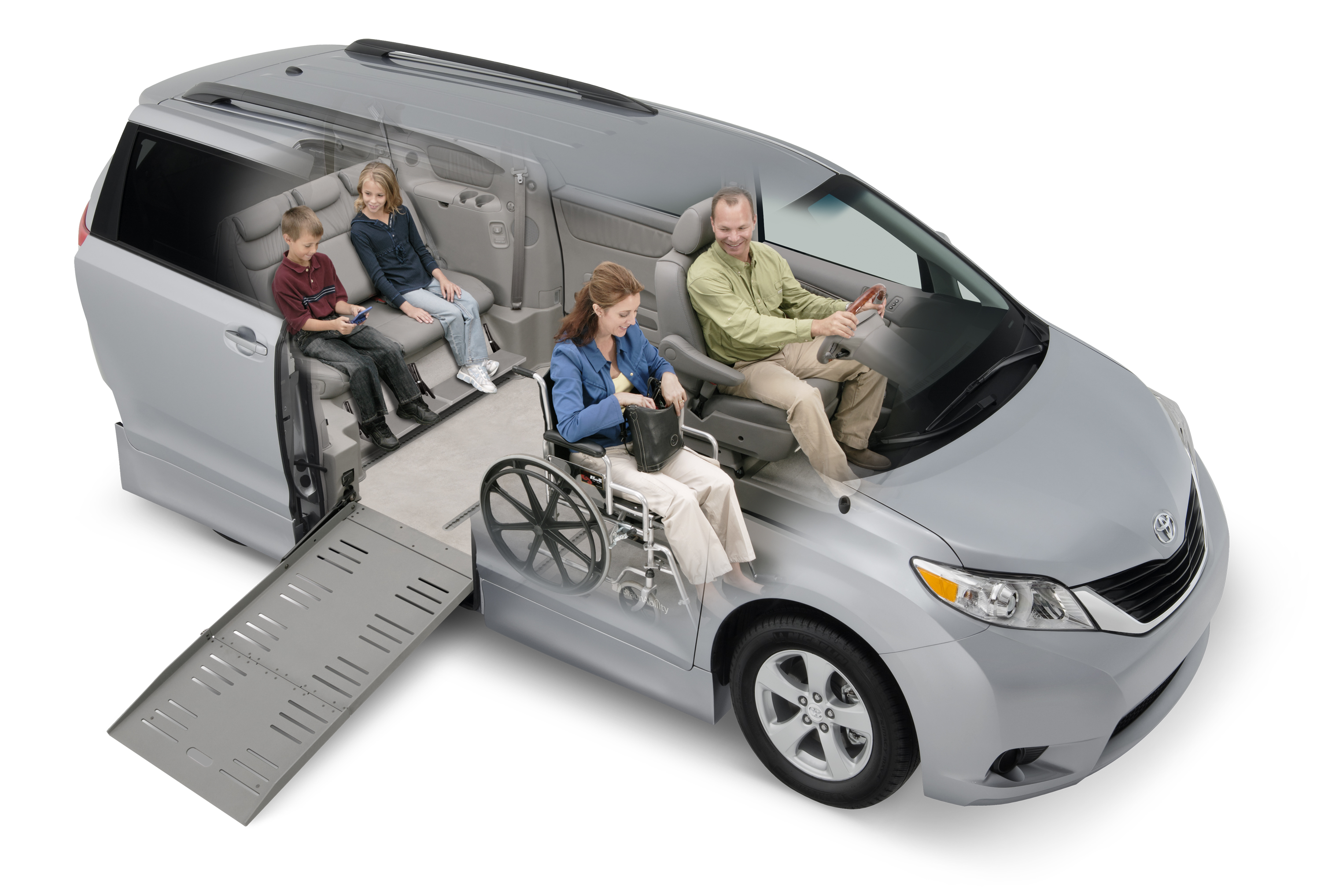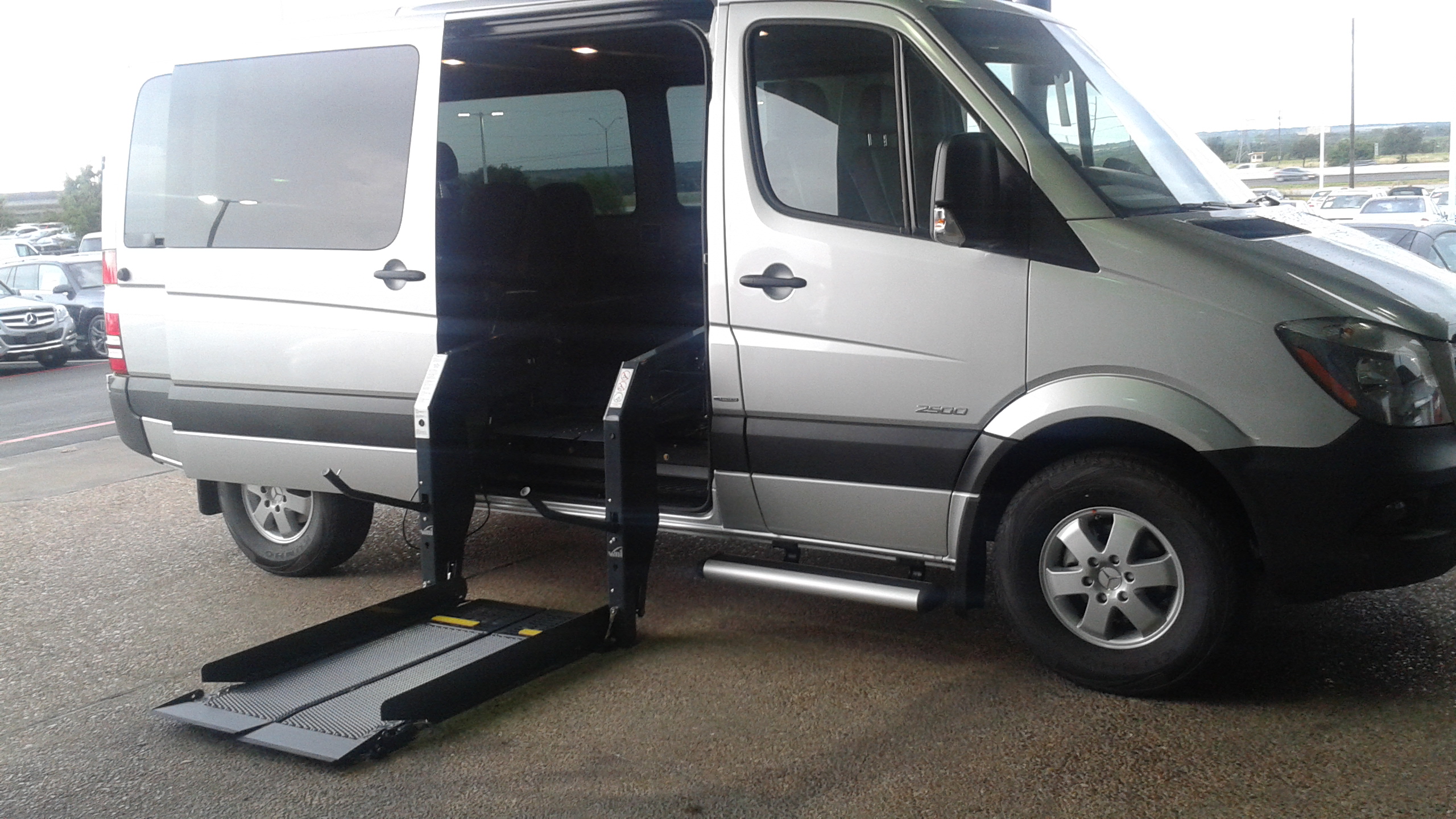Motorvation: What’s new in accessible vehicles?
Owning a vehicle, even if you are unable to drive personally, can make a big difference in quality of life. Driving allows flexibility for attending school, work or social functions without advance reservations or worrying about bus schedules.

| BraunAbility Toyota Sienna Rampvan XT |
By Michael Collins, New Mobility August 1, 2016
The number of people with disabilities who drive or own vehicles, especially those of us who use hand controls, is small when compared to the number of cars, trucks and vans that are sold each year. Despite that, there are many manufacturers that realize the value of our customer base and have continued to introduce new products or improve what is already on the market.
Automobile companies do whatever is necessary to keep ahead of their competition. The beginning of every new model year includes announcements about new models or, at the very least, some styling changes to set their latest vehicles apart from what they sold in the past. Consumers often prefer to buy something new rather than a vehicle that remains unchanged for years. While it sounds good, such changes can pose problems for those companies that modify vehicles for our use.
Mobility conversion companies rely on the availability of vehicles from domestic and foreign vehicle manufacturers in order to modify them for our use. Vehicles being converted for the first time require extensive engineering and testing, which can require a significant investment of time and expense. This can create challenges unknown to other businesses, as the continuing availability of the vehicles that mobility conversion companies need is beyond their control. That impacts the larger conversion companies like BraunAbility and Vantage Mobility, as well as smaller companies that modify only a few vehicles a year. The main focus of their efforts has been the modification of minivans, but there is a surprising variety of other vehicles available today.

Known for its GM Truck conversions, ATC also converts “crossover” SUVs like the Chevy Traverse, GMC Acadia (pictured) and Buick Enclave.
Buyers seeking larger vehicles or more interior room can choose between the Mercedes Sprinter, Dodge ProMaster or Ford Transit, as well as a few of the minivans. Those seeking more rugged vehicles might consider one of the converted pickup trucks or full-sized SUVs from companies such as Mobility SVM or All Terrain Conversions. Mobility SVM claims that the seven-passenger seating capacity of their larger vehicles results in them having “the largest seating capacity of any consumer wheelchair accessible vehicle.”
ATC, a company that normally completes GM Truck conversions, now performs conversions on some of the new “crossover” SUVs: the Chevy Traverse, GMC Acadia and Buick Enclave. These vehicles feature power ramps and doors, lowered floors and removable front seats. Some of the larger SUVs, pickup trucks and vans can even retain their four-wheel drive capabilities.

The BraunAbility MXV, based on the Ford Explorer, is the world’s first wheelchair-accessible sport-utility vehicle and offers drivers with disabilities another option besides minivans. Chicago Tribune
| New Models Being Converted |
BraunAbility has teamed up with Ford to offer the BraunAbility Ford Explorer MXV. This accessible SUV has several features that will interest wheelchair users, including a lighted under-floor ramp, a movable shifter unit and a seat base design that provides toe clearance for maneuvering.
The BraunAbility engineering staff are currently working on the latest model of the Chrysler Pacifica for those who are seeking a hybrid minivan. While the BraunAbility version of that particular vehicle has not been released to the public yet, it will be coming to market very soon.

2008 Mercedes Sprinter wheelchair van with Braun UVL power lift. Pinterest
Mercedes recently unveiled their new Metris minivan in both passenger and cargo editions. They are not conversion vans, but what sets these minivans apart is that both are capable of having a full-sized Braun Lift installed. Before the introduction of the Metris, it was necessary to have a larger vehicle like the Sprinter or Ford Transit in order to accommodate a large wheelchair lift. Mobility equipment dealers are hoping to have the first Metris equipped with a Braun lift system and Q’Straint restraints available by the summer.

Mercedes-Benz is offering van conversions out of the factory for the first time for its smaller vans, starting with model year 2016 V-Class and Citan models.
While the vehicles that those companies convert for our use usually begin as standard models off the production lines of mainstream car companies, there is an exception to that pattern. The Mobility Ventures MV-1 is touted by the company as “the first mobility vehicle built specifically for wheelchair accessibility and not an after-market conversion.”
The MV-1 is not an entirely new concept, as it originally debuted as the Standard Taxi but was discontinued. The latest versions are equipped with new features such as an automatic ramp and are being marketed to taxi companies, which will improve the accessibility of taxi fleets worldwide. They should also be durable, as the parent company of the MV-1 is AM General — the same company that built the first Jeep vehicles over 70 years ago.
The best means of finding a vehicle that fits your situation is to visit a local mobility equipment dealer and work with their staff to discuss needs and learn what is available. Head clearance, maneuvering space and legroom are features that can make a real difference in the ability to use a particular model of car, truck or van. Boarding a vehicle at a dealer’s showroom or checking out one owned by a friend can reveal more information than any amount of time spent reading brochures or doing internet searches.
The “ideal” vehicle is an individual preference based on the characteristics of drivers or passengers and their mobility devices. Finding and purchasing the ideal vehicle is a time consuming process, but readers who check out the Resources List that follows should be able to find much of the information they need before visiting a mobility equipment dealer.
Additional news about vehicles can be found periodically in the pages of New Mobility, especially in our November Consumer Guide. The Motorvation column in that issue will discuss the assistive technology and peripherals that make a conversion vehicle accessible: hand controls, wheelchair lifts, securement systems, and more.
![]() Source New Mobility
Source New Mobility
Also see
Why The 2016 Mercedes Metris Laughs At Your Luxury Truck Truck Yeah!
BraunAbility MXV gives drivers with disabilities SUV option Chicago Tribune
Factory conversions for Mercedes-Benz Metris. Single-invoice conversions carry factory warranty on all equipment Autofile.ca
Sprinter Vans make a perfect vehicle for anyone who requires special accommodations for handicap or mobility type conversions Sprinter Guy
Motorvation: All About Hand Controls New Mobility


